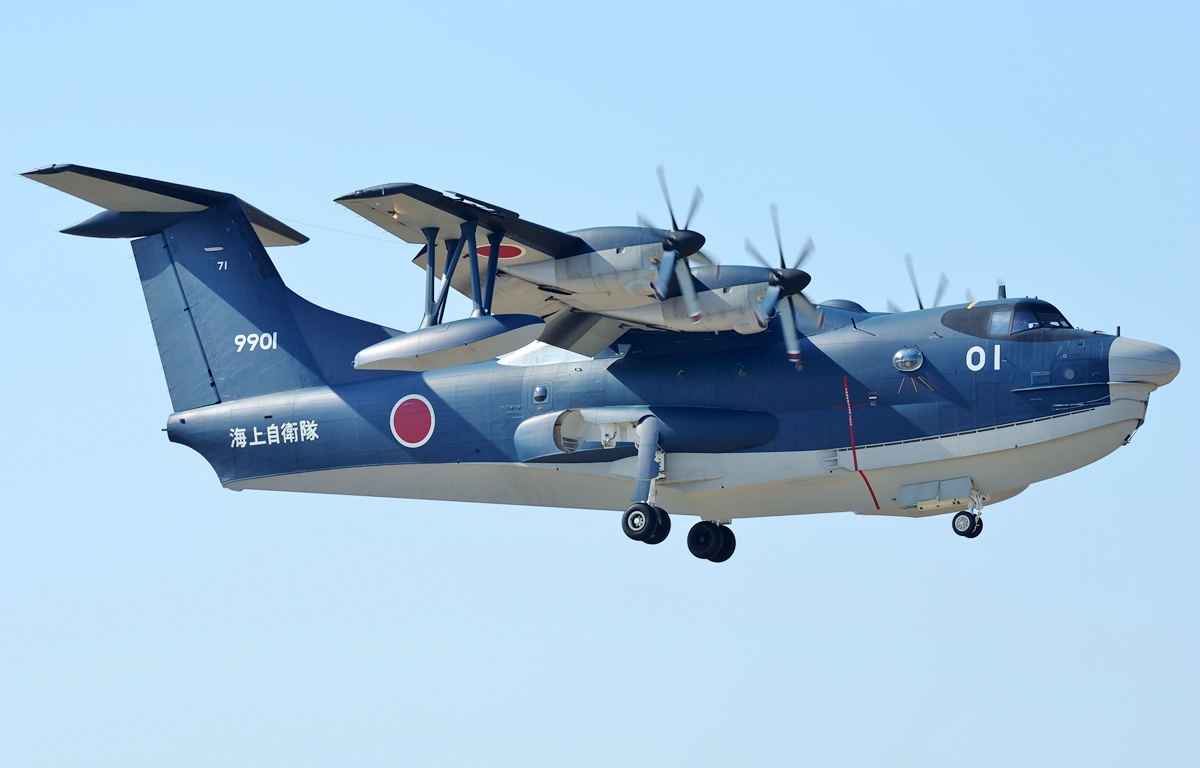We already have dornier amphibious aircraft (not D228). Don't we? What is the difference between this US2i?
Dornier Seastar:
1. India have licence to built only Do-228, Seastar is not included.
2. Seastar is not comparable with U2i in size, capacity, or even endurance.
complete report about U2i attached below.
=======================================================================================
India may agree to buy Japanese US-2i aircraft for $1.3 billion
India may finally agree to buy the Japanese ShinMaywa US-2i amphibious aircraft in a deal worth $1.30 billion for the Navy during the visit of Japanese Prime Minister Shinzo Abe during September 13-14.
The deal, it seems, got finalised during a meeting between former Defence Minister Arun Jaitley and Japanese Minister of Defence Itsunori Onodera during September 5-6 in Tokyo, sources told BusinessLine.
According to sources, Jaitley’s meeting with Onodera had been “fruitful” in the backdrop of Japan sweetening the deal by offering 10-15 per cent discount on each of the plan that cost over $100 million.
India plans to buy 12 of this search-and-rescue (SAR) maritime surveillance aircraft which the
Indian Navy plans to deploy strategically at the Andaman and Nicobar Islands with the objective of carrying out patrols in the larger Indian Ocean Region (IOR).
However, the deal has been stuck for over seven years now due to the high cost of the planes. According to the agreed plan, the Ministry of Defence will be buying 12 planes off the shelf. Subsequently, at a later stage the government will be procuring 18 more that will be built in India under the ‘Make in India’ programme.
Next phase
“Building the plane here will be next phase of the deal. As of now the focus is on procuring the 12 planes in fly-away condition.
“This is because having a platform is an absolute necessity for the Navy. And there are few suppliers for this kind of an aircraft. This will be a great asset in protecting our interest in the IOR,” said an official, involved in the deal.
The deal, talks for which began around 2010, got a major boost when the Abe government decided to lift the ban on exporting Japanese arms to the world in April 2014.
Following this, during the last annual India-Japan Annual Summit in December 2015, both Abe and Prime Minister Narendra Modi agreed to expedite the US-2i programme.
“Defence cooperation with Japan remains a priority for us. I cannot prejudge what the outcome will be on US-2i during this visit because the outcome is under works now,” said Pranay Verma, Joint Secretary (East Asia), Ministry of External Affairs.
According to the joint statement that was issued post Jaitley’s visit to Japan, progress had been made in the field of defence equipment and technology cooperation including in the framework of the Joint Working Group on Defence Equipment and Technology Cooperation as well as regarding the cooperation on US-2 amphibious aircraft.
Rahul Gangal, Partner (Aerospace and Defence), Roland Berger, said: “While cost is one of the factors, there is also a strategic need to acquire these planes. I believe the deal should be expeditiously signed.”





